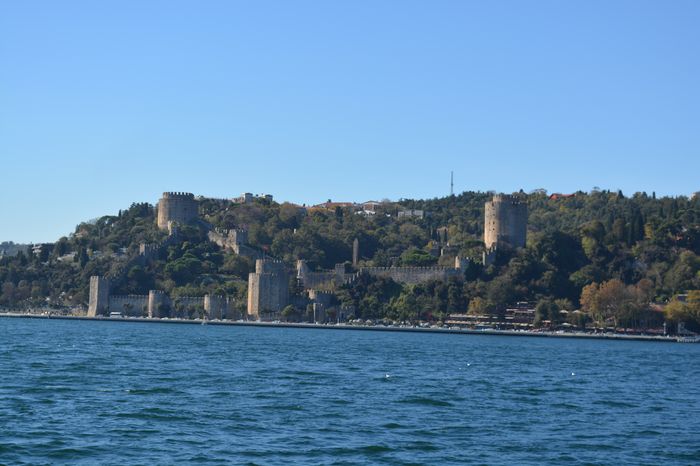Only in the matter of religion was the regime idiosyncratic. The reputation of Vandal Carthage has been stained by the polemics of the Catholic Victor of Vita, whose account of life in his province under the Vandals is a deliberate attack on the persecution of true religion by the Arian state and its clergy and minions. Even in his account, the passage of time mitigated the hostilities, until Hilderic, ruling in the 520s and bearing in mind that he was descended from Roman emperors as well as from Vandal kings, allowed Catholic bishops to return to their sees and sought to make peace with the empire. A sober reading of Victor of Vita’s lurid text, “against the grain,” as one recent scholar put it, suggests that Victor overstates his case, not least to dissuade his fellow Catholics from sidling across the street into the churches of the majority and the mainstream.
Donatists of Africa
Just as the Donatists of Africa accepted a government-mandated religious change in and after 411, when Augustine and his henchmen succeeded in having their opponents suppressed, it is clear that when the new flavor of religion in power became Arian, most Africans, eager to stay right with their god and unfastidious about doctrinal nuance, found the bigger and more prosperous churches good places to go. When Justinian’s troops returned and imposed another regime change, the movement back to official Christianity was easy, natural, and untroubled istanbul day trip.
For a generation after they arrived, the new Vandal African leaders retained the military prowess that had brought them to power and that gave them confidence. Self-assertion and a vision of opportunity brought an African fleet against Italy in 455, succeeding where the Carthaginians had failed three times. The symbolic value of an attack on the city of Rome itself by barbarians remained and remains strong, and so this event and Alaric’s earlier sack in 410 remain the benchmarks of terror and destruction in the minds of readers of easy history.1 The events of 410 and 455, however, were nothing compared with what nominally Roman troops would bring about in the sixth century. The emperor Leo’s attempt to attack the Vandals in return in 458 ended in ignominious failure—a failure that would have been much on the mind for Justinian and Belisarius most of a century later.
The Africa of the late fifth century, however, settled into a stable and enduring pattern, increasingly at peace with those around it. In particular, under Odoacer and Theoderic, in the age of rational coexistence and stabilization, the Vandal rulers were respected as equals and left to flourish. There are worse fates. When the heroic conqueror Gaiseric died at Carthage in 477 at great age, a sequence of more and more romanized successors managed the realm rationally and strategically.
Galla Placidia
Gaiseric’s son Hunneric had been married to Eudocia, the daughter of Valentinian III and granddaughter of Galla Placidia, and so in 523 there came to the African throne Hilderic, grandson of the conqueror—and grandson equally of Valentinian III. He succeeded Thrasamund, who had been married to Theoderic’s sister Amalafrida and thus bound to the Italian regime in a network of dynastic politics following African raids on Sicily in 491. Under Hilderic’s rule, from 523 to 530, Theoderic’s widowed daughter was imprisoned and died, and the regime was nothing but friendly with Con-stantinople and its powers. At the same period, Justinian, just coming to the throne in his own name, would observe a similarly complaisant and apparently friendly regime in Italy under Amalasuntha during the regency of her son Athalaric. On one reading, Justinian’s ambitions at reconquest arose from his sense of both Africa and Italy as now so close to friendly that only token force would be needed to restore regimes which would be loyal to him in every important way Crossed the Rhine in 406.
The overthrow of Hilderic by his cousin Gelimer in 530 gave Justinian his pretext, and the fleet set out on its mission in 533, doomed to succeed. It should have failed, and failure would have been better for all. Instead, victory was facilitated by a catastrophic breakdown of intelligence on the part of the Africans. News of a rebellion against African rule in Sardinia had sent Gelimer’s own fleet and forces north on what proved a fool’s errand and left the African mainland effectively undefended. Belisarius, meanwhile, knew not his own good luck, and so steered to land far south of Carthage, more than 150 miles from his goal.
At best, it would be ten days’ cumbersome march, with the fleet following close beside and the army staying in sight of the sea. Good luck along the way, in finding local officials who preferred capitulation to slaughter, eased the journey. A single battle, ten miles from Carthage, in which the defenders’ bad luck in some opening skirmishes was followed by Gelimer’s timid generalship, won the day for Belisarius’s cavalry and his Huns, long enough for the infantry to catch up with them and march triumphantly into Carthage on September 15, 533.







